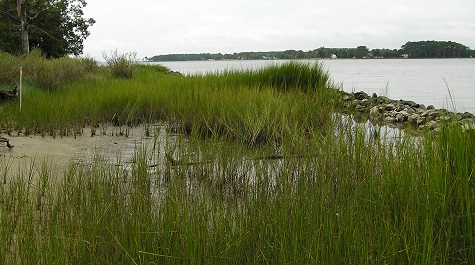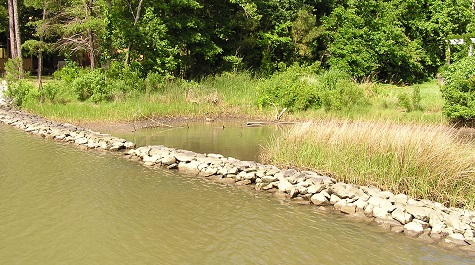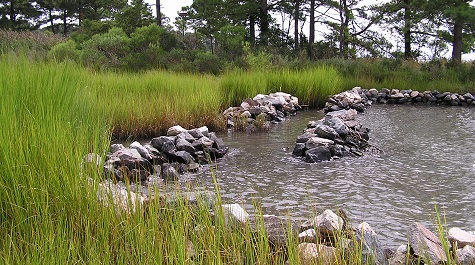Marsh Toe Revetment
... at Natural Marsh
An existing marsh that is functioning as shore protection can be maintained with a freestanding, trapezoidal-shaped structure. Marsh toe revetments can be used where existing marshes have eroding edges and scarps, or where minor upland bank erosion is present in spite of the marsh being present.
Suitable Sites
- Existing wide tidal marsh greater than 15 feet
- Marsh edge erosion or minor upland bank erosion
- Very shallow water near marsh edge with hard sand bottom
- Construction access for installation is feasible without excessive marsh disturbance
Guidelines for Marsh Toe Revetment
- Marsh toe revetments should be offset from the existing marsh edge near the mean low water elevation. Leave the non-vegetated zone between the marsh edge and mean low water uncovered.
- Strategically place tidal gaps at natural marsh channels or if the total length of marsh toe revetment is greater than 100 ft.
- The height should be near mean high water in low energy settings to allow regular wave overtopping
- The height can be raised 1-2 ft above mean high water in moderate energy settings or where the marsh is less than 15 feet wide and the marsh width cannot be increased.
- Construction mats should be used to cross through adjacent marsh, all material stockpiles and equipment storage should be in the upland area.




